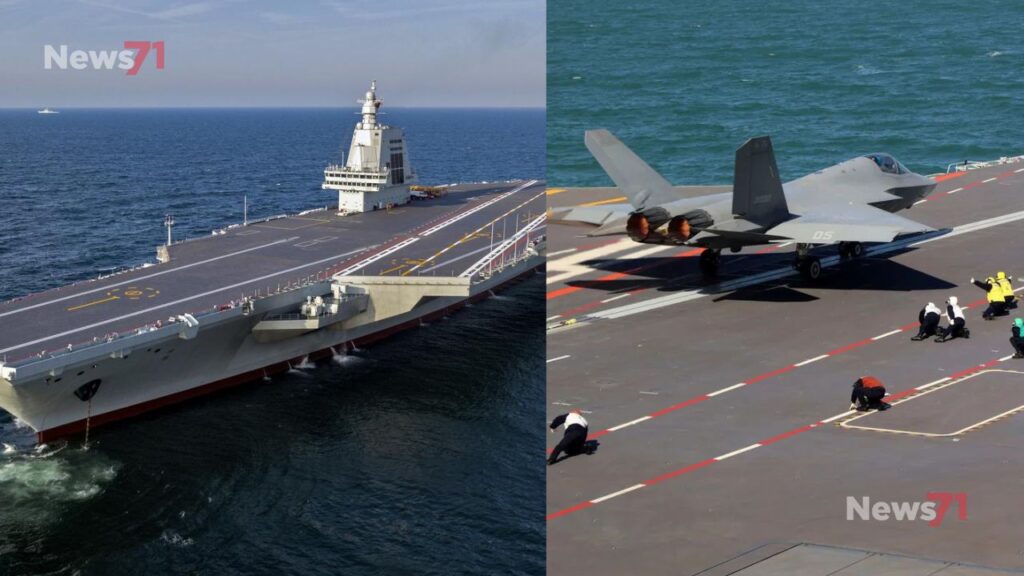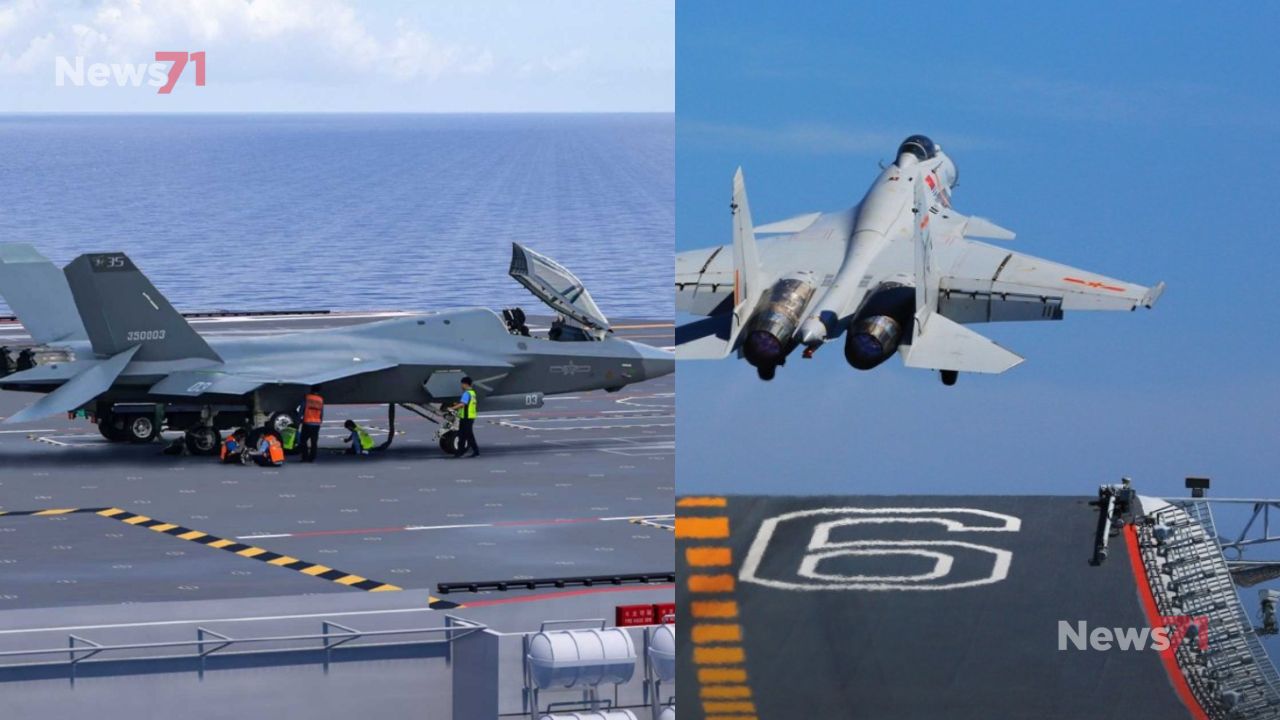China unveils aircraft carrier Fujian with a major technological leap that puts its naval power closer to matching the United States. For the first time, Beijing has showcased footage of its newest carrier using an electromagnetic catapult system (EMALS) to successfully launch three advanced aircraft types, a milestone hailed by state media as a breakthrough in the nation’s maritime transformation.
In video released Monday by state broadcaster CCTV, the Fujian aircraft carrier was seen launching the J-35 stealth fighter, the upgraded J-15T fighter jet, and the KJ-600 early warning and control aircraft. All three used the ship’s advanced electromagnetic launching system instead of the older ski-jump ramps featured on China’s other two carriers, Shandong and Liaoning.
A New Era for China’s Navy

The successful trials mark a major step forward in China’s efforts to modernize its naval fleet. Analysts say that China unveils aircraft carrier Fujian at a time when the country is seeking to expand its “blue-water” capabilities, enabling its navy to operate farther from home shores and project power on a global scale.
With the EMALS system, Fujian-based aircraft can take off carrying heavier weapon and fuel loads, significantly extending their combat range. This new capability could allow Chinese aircraft to strike distant targets, a development that places the Fujian in the same technological category as the US Navy’s USS Gerald R. Ford, currently the only other carrier in the world equipped with EMALS.
Commissioning Expected Soon
Military experts believe that the successful tests suggest Fujian may soon be formally commissioned into the People’s Liberation Army Navy (PLAN). According to Carl Schuster, a former US Navy captain, full integration with China’s air force and rocket force is expected after further certifications, likely in the coming months. Final trials could extend into next spring.
Once commissioned, Fujian will become China’s most powerful carrier, expanding its ability to launch advanced aircraft on longer missions with greater payloads. The move underscores Beijing’s growing emphasis on strengthening its maritime forces amid regional tensions in the South China Sea and rising competition with the United States.
China Unveils Aircraft Carrier
The timing of the announcement is notable. It coincides with a visit by a US congressional delegation to Beijing, the first such meeting in six years, focused on rebuilding bilateral exchanges, including military communication. While both nations publicly emphasize dialogue, the unveiling of Fujian’s advanced capabilities highlights the strategic rivalry shaping their naval ambitions.
A Strategic Milestone
While China unveils aircraft carrier Fujian with EMALS technology on par with America’s most advanced carrier, key differences remain. Unlike the nuclear-powered USS Gerald R. Ford, the Fujian still relies on conventional power. Nevertheless, analysts see this as a landmark achievement that cements China’s position as the only other country to field such advanced launch technology.
The introduction of Fujian is a clear signal of Beijing’s determination to modernize its navy, expand its global reach, and challenge US dominance on the high seas. For China, this carrier represents not just a warship, but a symbol of its transformation into a formidable maritime power.






